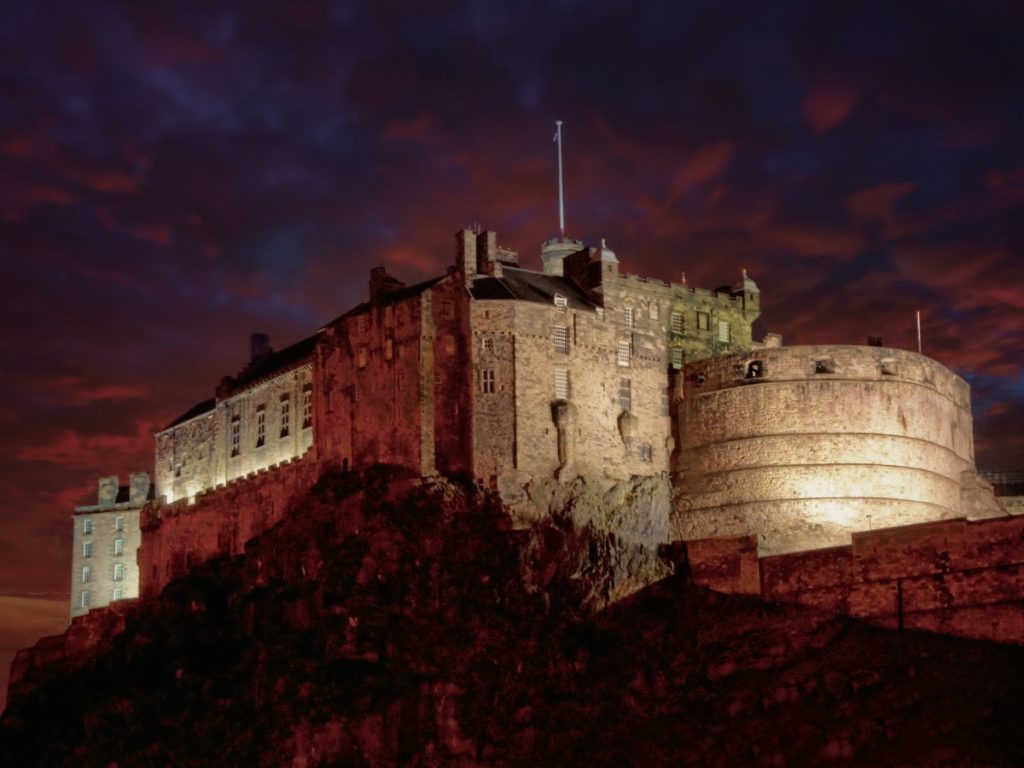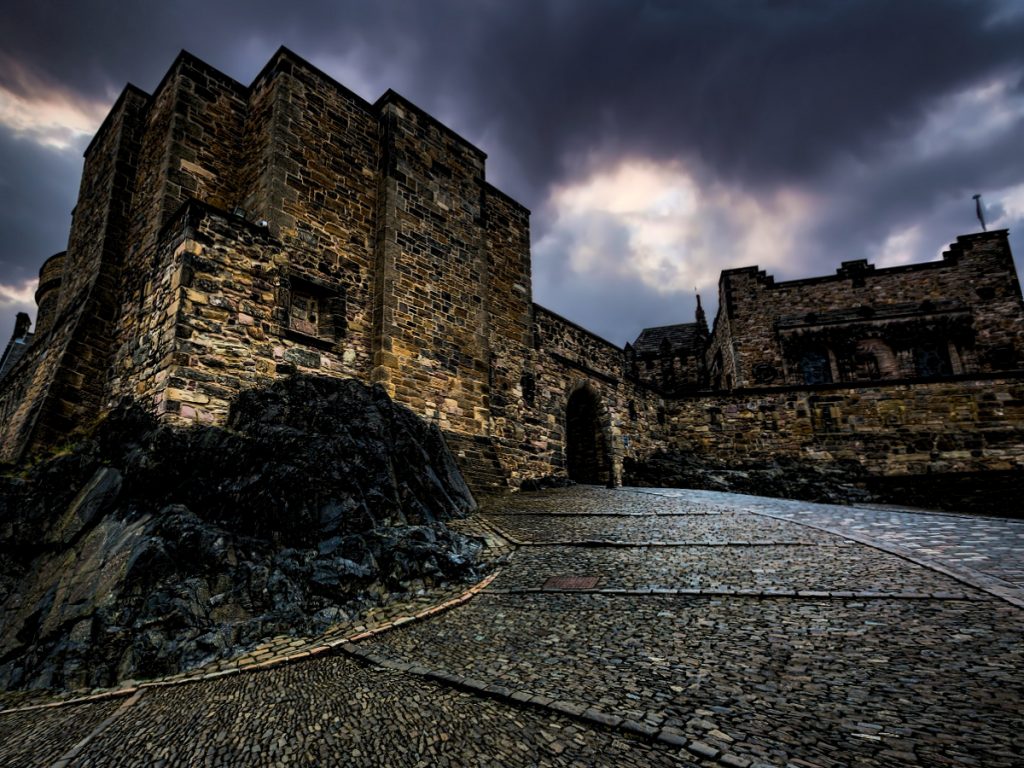The Sack of Berwick must surely be one of the bloodiest atrocities of the Scottish Wars of Independence. Today a ghostly piper is said to play his pipes while pacing the ramparts of Berwick Castle. We do not know who this spectre is, but could he be a victim of Edward I of England’s rage?
John Balliol and The Auld Alliance
The death of Alexander III and his heir, Margaret of Norway left Scotland in a precarious situation. Several claimants to the crown came forward, quoting genealogies. In the chaos which ensued, the Scottish Magnates appealed to Edward I to arbitrate. Edward rubbed his hands with glee. He was a shrewd and ambitious man who had already conquered Wales. The English king declared that he was willing to arbitrate on condition that he was named Lord Paramount over Scotland. He appointed John Balliol as king and prompting began treating him as a vassal.
‘Toom Tabart’ as Balliol became better known as, was an ineffectual leader. Balliol was asked to supply troops for Edward’s war against France. The Scottish nobility responded by forming the ‘Auld Alliance’ with France, a treaty that would force England to fight on two fronts if either Scotland or France were invaded. Edward was furious. His response was quick. Scotland would feel the full force of his vengeance.
Berwick-upon-Tweed: Another Alexandria
Berwick-on-Tweed was unfortunate in where it was located. It was a border town and as such, found itself being used as a coveted prize of war. At the time John Balliol came to power, Berwick had been part of Scotland for over three hundred years. It was an extremely important settlement. Berwick was second only to London in terms of trade in medieval Britain. A huge network of trade between Scotland and Northern Europe was centred around Berwick’s port and the town was prosperous as a result.
King David I, King of Scots, made Berwick a Royal Burgh by 1119, indicating that this was a town of some importance. The surrounding Tweed valley provided excellent pasture for sheep farming that led to the development of the wool trade with Flanders. Many Flemings settled in the area and established a factory at the Red Hall.
So great was the power of its merchants and the extent of its foreign commerce that one English historian described it as another Alexandria.
The Sack of Berwick
Edward raised an army of some 30,000 soldiers and marched on Scotland. His first port of call was Berwick-on-Tweed. He laid siege on the town for a couple of days and then on the 30th of March 1296, Good Friday, he began his attack on the town.
He commanded his fleet to enter the river at the same moment as the main body of the army mounted their attack on the town. The Scottish garrison burnt three of the ships and compelled the rest to retire but the townsfolk were less lucky.
Edward, mounted on horseback, was first over the defensive dykes which surrounded the town. Edward unleashed the full blood rage of his army on its citizens. It is estimated that some seventeen thousand souls, including women and children, were put to the sword. The churches the inhabitants fled to, for sanctuary were violated and defiled with blood. They were then turned into stables for the English cavalry.
Bower wrote an account of the sack of Berwick in his Scotichronicon:
‘When the town had been taken in this way and its citizens had submitted, Edward spared no one, whatever the age or sex, and for two days streams of blood flowed from the bodies of the slain, for in his tyrannous rage he ordered 7,500 souls of both sexes to be massacred…So that mills could be turned round by the flow of their blood.’
The Flemings Defence of the Red Hall
Meanwhile, thirty Flemish merchants bravely defended their Red-Hall. As the night approached, these thirty men held out against the might of the English army. The English decided to torch the building, with its defenders still inside.
The Chronicle of Walter of Guisborough states:
“And soon, the trumpets sounding, they [the English] crossed as nothing an embankment which the Scots had made with boards, and attacked the enemy, slaughtering them from here to the sea. The Scots were astonished by their onset, and there was not one of them who raised a sword or threw a spear, but they stood dumbfounded like men beside themselves. But thirty Flemings, who had received the Red Hall on condition that they should defend it against the English King at all times, defended the house manfully until evening, but at length it was set on fire, and they were burnt with it…”
Finally, Sir William Douglas surrendered Berwick Castle and Edward left it garrisoned by English soldiers. Alas, Berwick’s glory days were over.
The Aftermath of the Sack of Berwick
Edward marched north, crushing the Scots at Dunbar. When Edward caught up with John Balliol, he had him stripped of his crown and the royal insignia was ripped from his robes. But ritual humiliation and conquest were not enough for Edward ‘Longshanks’. Scotland was to be stripped of her lodestones of identity. The Stone of Destiny, the inauguration stone of the King of Scots was sent to Westminster and the Black Rood of Saint Margaret was plundered.
However, Edward’s victory was not secure. Within a year, two Scottish knights had risen up against him. William Wallace and Andrew Murray were able to defeat a superior force of heavily armed knights with a small army of spearmen at Stirling Bridge. Once more Edward was forced to show the Scots the full power of his might. Even after the execution of Wallace, the Scots were not easily quelled.
Robert The Bruce entered the fray. He would outlive Edward and continue the war with Edward’s son, also called Edward. The tide would swing in Scotland’s favour and Bruce would win back the castles Edward had captured. The death knell in the English campaign occurred at the Battle of Bannockburn.
Berwick Changed Hands Multiple Times
Berwick would change hands some thirteen times during the course of the Scottish Wars of Independence. Bruce retook Berwick in 1318. It eventually passed into English hands permanently in 1482. It now remains part of Northumbria.




